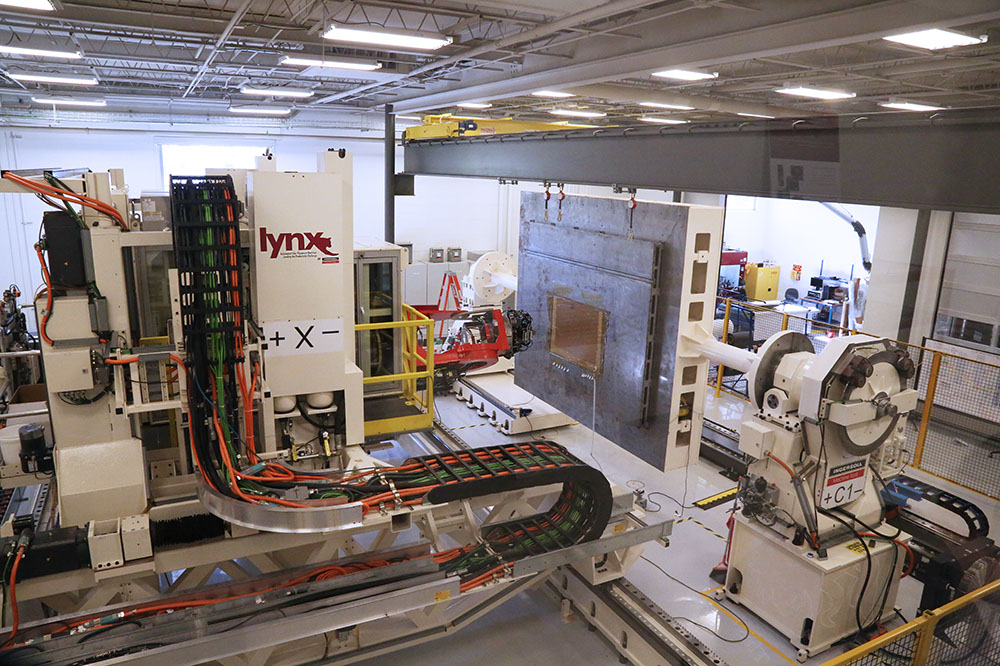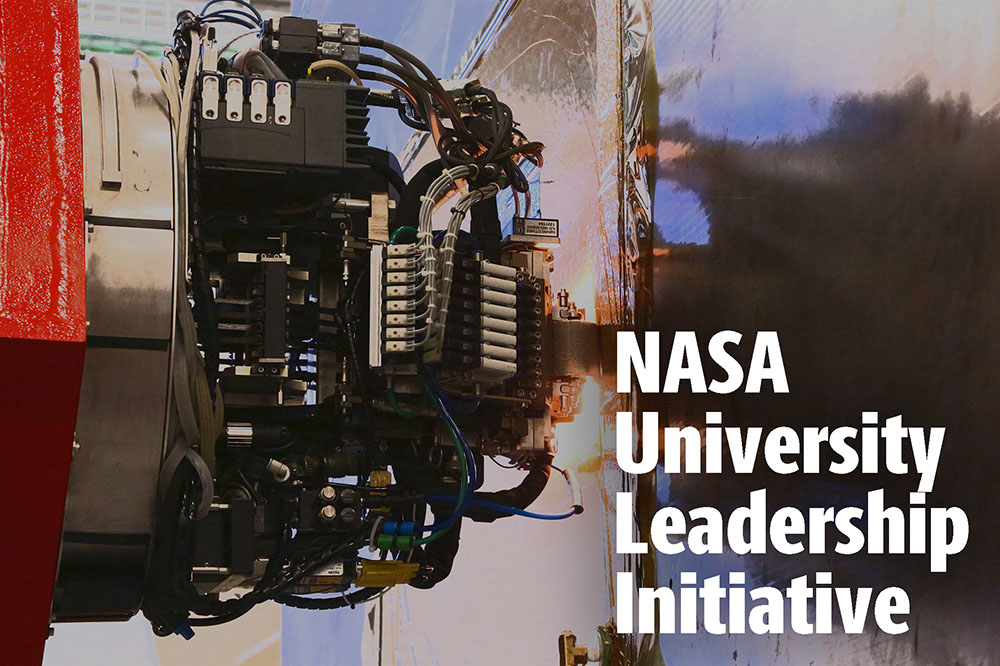NASA grant helps USM team transform transportation
Tue, 09/01/2020 - 05:44pm | By: Margaret Ann Macloud
 A team of students and polymer scientists at the University of Southern Mississippi
is transforming the way the world travels, and with a recent $5.7 million NASA grant,
their work is being elevated to new capabilities.
A team of students and polymer scientists at the University of Southern Mississippi
is transforming the way the world travels, and with a recent $5.7 million NASA grant,
their work is being elevated to new capabilities.
USM’s School of Polymer Science and Engineering is part of a team along with the University of South Carolina, Boise State University, Benedict College, and multiple industry partners that is redefining the manufacturing and simulation processes used in aircraft production. The team’s atom to airframe to spaceframe approach will make urban air mobility possible by dramatically increasing the production rate of aircraft. Ranging from drone delivery services to air metro services to air taxis, urban air mobility refers to in-air transportation within urban areas. It is expected to be a commercially viable market by 2030. However, this will require aircraft to be built in much higher quantities and frequencies than are currently being produced. This four-year NASA University Leadership Initiative (ULI) grant will work to make these production demands possible.
“This award is certain to bring recognition to Mississippi and the field of advanced aerospace material science and engineering and provide new opportunities to attract, educate, and ultimately employ some of our state’s most talented, next generation scientists and engineers,” USM professor and project lead Dr. Jeff Wiggins said.
Joined by Boise State, USM will begin the research using experimental and simulation techniques to strengthen and increase durability in the thermoplastic tape currently used to build aircraft. The USM team will advance and develop carbon-fiber reinforced composites to be used as the material of choice for the manufacturing of these vehicles. This tape will then be passed to South Carolina’s team, which will use advanced manufacturing processes such as automated fiber placement and automated tape layup to build aircraft parts at a higher production rate. The UofSC team will then use thermoplastic welding, instead of nuts and bolts, to fusion bond the parts together.
“The question is how do we rapidly advance these materials and manufacture those materials in volumes that are going to support these types of assemblies and these types of production environments, both economically and in high quality,” Wiggins said. “That’s what USM is bringing in the development side of it.”
Today, high-selling aircraft like the Boeing MAXX and the Airbus A321 can be produced at a rate of 60 to 70 aircraft each month, or two to three aircraft per day. The university teams predict that urban air transport will ultimately require 100 aircraft to be produced a day, which is why they view their work as transformative in finding a new way to manufacture large-scale urban air mobility.
“Dr. Wiggins is an international leader in polymer composites whose work has already impacted the materials used in modern aircraft,” said Dr. Chris Winstead, Dean of USM’s College of Arts and Sciences. “This project builds on years of dedicated research effort and, in addition to aiding the production of future aircraft, will provide our students with a truly cutting edge research experience.”
USM’s research team includes Ph.D. students Witold Fuchs, Jared Bates, Bernie Barea-Lopez, Scott Murphy, Rebecca Haber, Chris Croshaw, Aynslie Fritz, Tyler Richardson, Lina Ghanbari, Will Guzman and Levi Hamernik.
 The University Leadership Initiative was created by the NASA Aeronautics Research
Mission Directorate (ARMD). This $32.8 million ULI has five team leads, including
South Carolina, North Carolina Agricultural and Technical State University, Oklahoma
State University, Stanford University and the University of Delaware. The ULI will
allow these universities to build their own teams and formulate their own research
paths in hopes that their findings support the NASA ARMD portfolio and the larger
U.S. aviation community.
The University Leadership Initiative was created by the NASA Aeronautics Research
Mission Directorate (ARMD). This $32.8 million ULI has five team leads, including
South Carolina, North Carolina Agricultural and Technical State University, Oklahoma
State University, Stanford University and the University of Delaware. The ULI will
allow these universities to build their own teams and formulate their own research
paths in hopes that their findings support the NASA ARMD portfolio and the larger
U.S. aviation community.